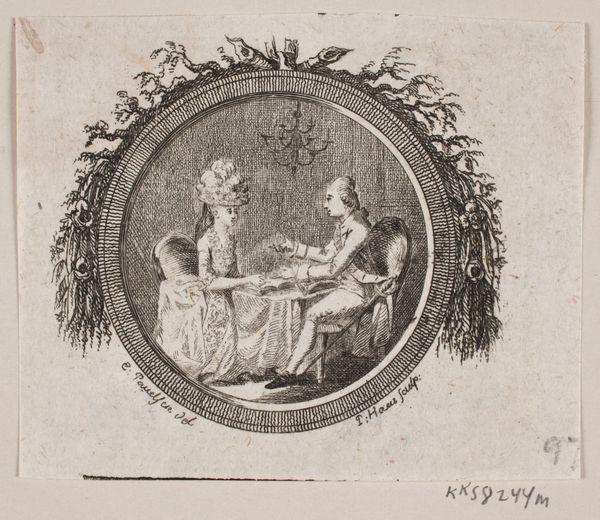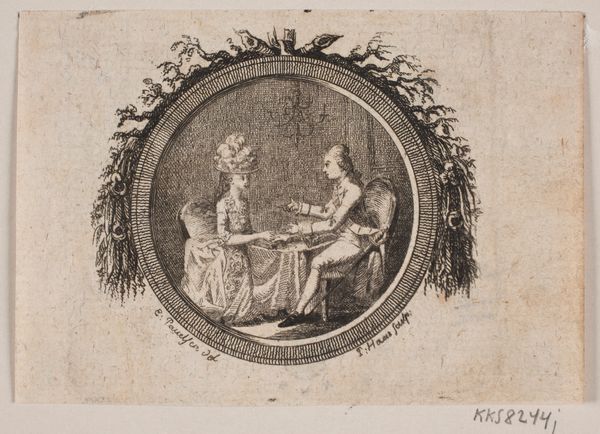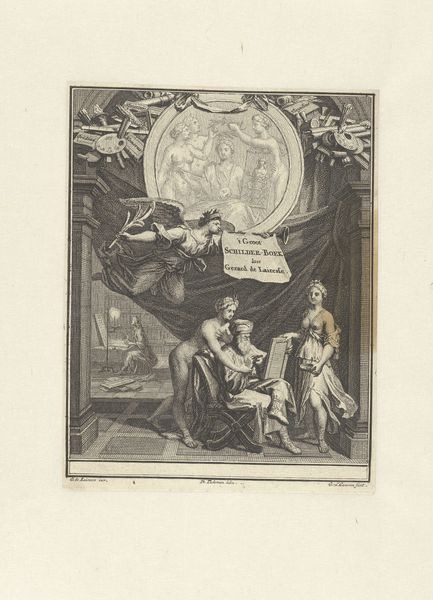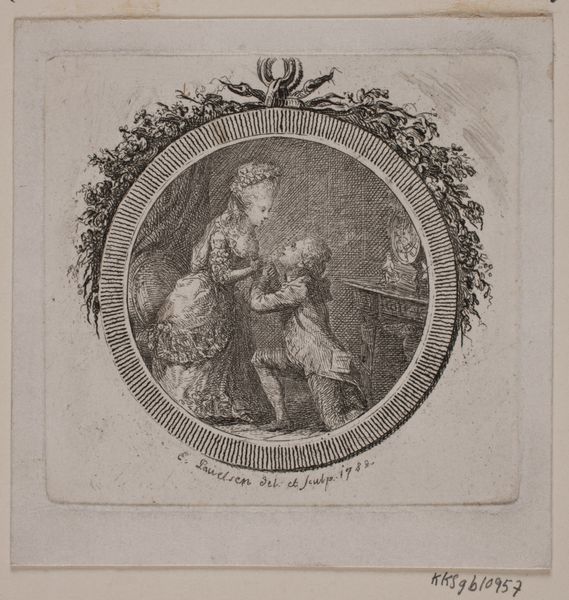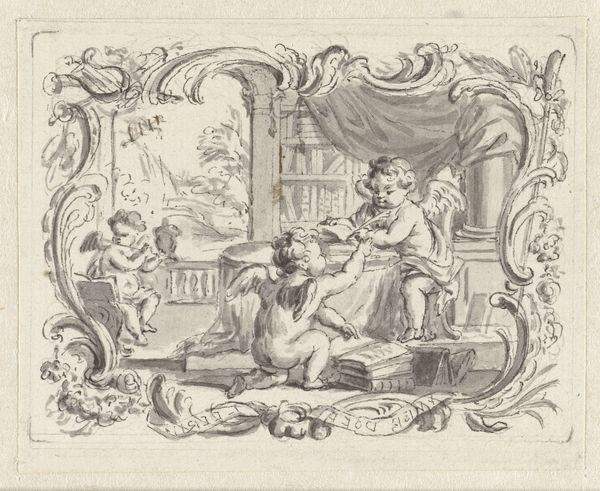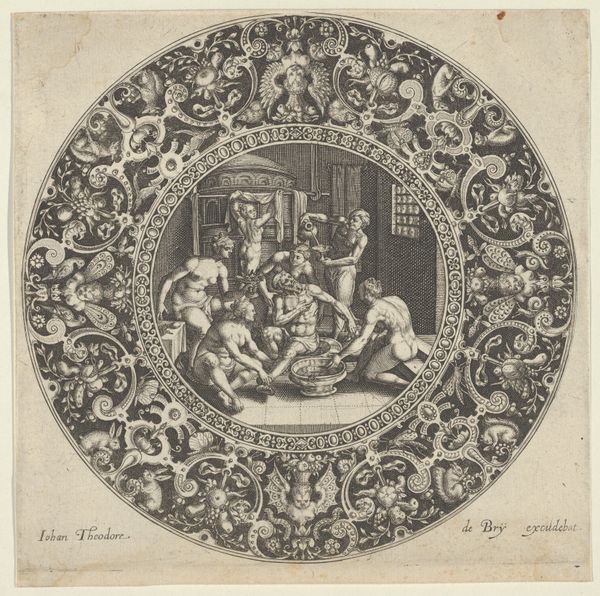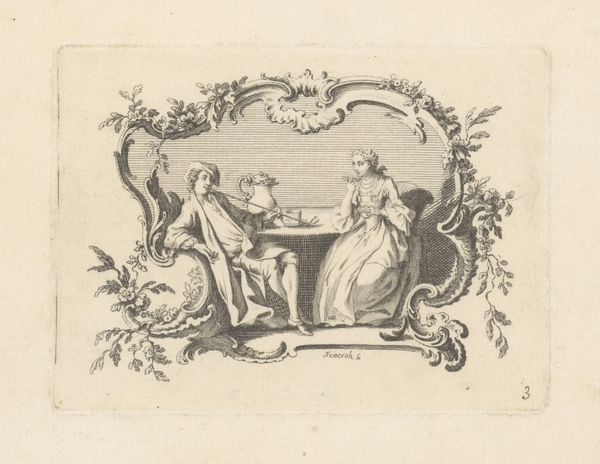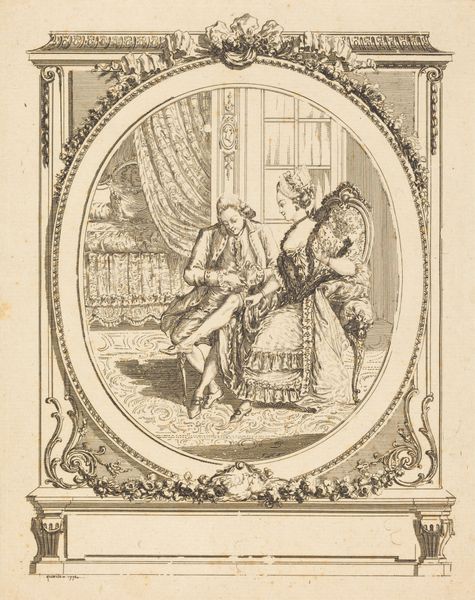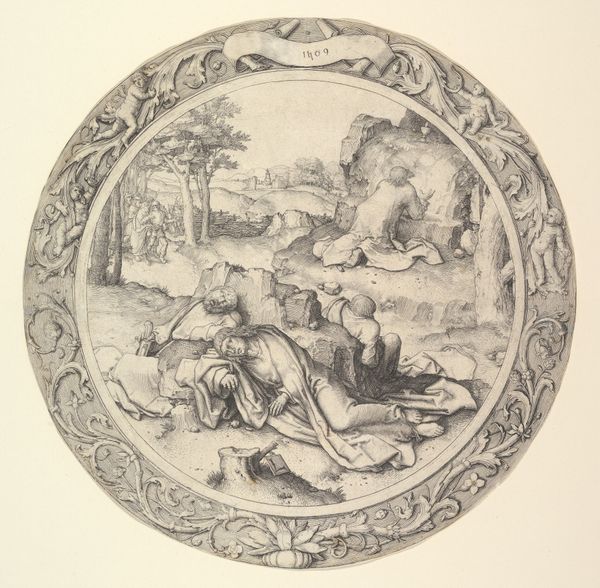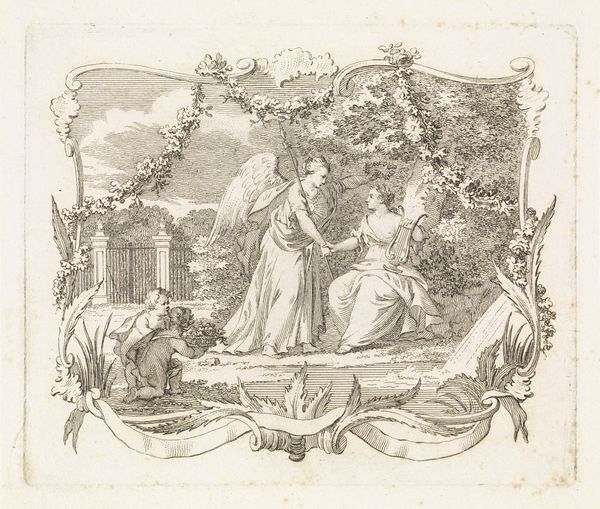
Titelvignet til S. Richardson: "Miss Clarissa Harlowes Historie", tredje del 1783
0:00
0:00
Dimensions: 60 mm (height) x 73 mm (width) (bladmaal)
Curator: This is a print from 1783 by Georg Christian Schule. It’s titled "Titelvignet til S. Richardson: Miss Clarissa Harlowes Historie, tredje del," currently held at the SMK in Copenhagen. Editor: My first impression is one of hushed intimacy. It has an almost secretive air about it. A group of women gathered closely. Curator: It is! Considering that it’s meant to accompany Samuel Richardson’s novel, *Clarissa*, it evokes the circumscribed lives of women in the 18th century. How their social existence revolved around each other. Their domestic role... Editor: And the materials used: engraving and intaglio. Such delicate processes mirror the societal pressures weighing down the scene. The technique speaks volumes about the material conditions shaping their lives and work—or lack thereof, really. Curator: Exactly. *Clarissa* tells the tragic story of a young woman who fights against her family's desire for her to marry a wealthy man she despises. We can read their confinement into the medium itself. The sharpness of the lines, the limited scale... This all resonates with Clarissa’s restricted freedoms, wouldn't you say? Editor: Indeed! Furthermore, consider the materiality of their garments. One is sewing or embroidering... it signifies their connection to domestic labor. I imagine there are class tensions lurking, since their attire suggests at least middle-class comforts. The print isn't just about representation. It embodies production. Curator: Yes, and we can look at that central cluster around the tea table through the lens of ritual. This quotidian ritual offered them space for exchange, a moment for agency. Within constraints, female solidarity blossoms. Editor: Precisely. In short, the print highlights how constraints create and determine available space for resistance and exchange. Thanks to your art historical background, looking at it as a narrative aid is just brilliant. I am left wondering about its market impact; it should sell because the novel was well known, no? Curator: It seems this vignette offers an intriguing distillation of gender roles in the late 18th century. Editor: Agreed, and Schule's use of printmaking subtly underlines how such roles were reinforced materially.
Comments
No comments
Be the first to comment and join the conversation on the ultimate creative platform.
